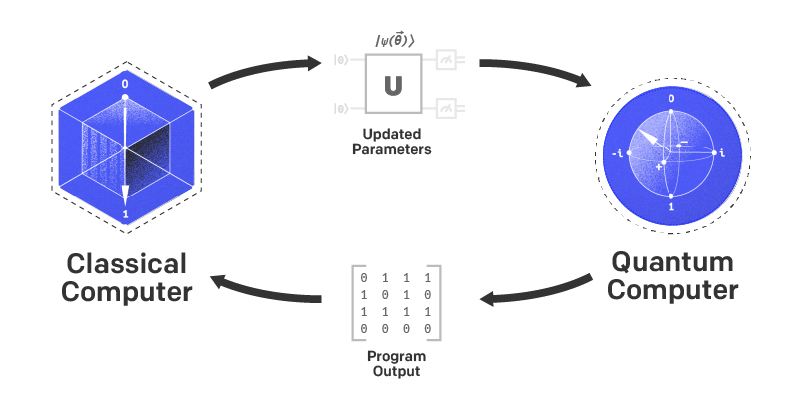The Evolution of Early Cryptographic Systems: A Journey Through Time
The art of cryptography has played a pivotal role in the history of communication, serving as a shield to safeguard sensitive information. Dating back to ancient civilizations, cryptography has undergone significant transformations, evolving alongside human ingenuity. This article explores the early cryptographic systems, tracing their roots and examining how they laid the groundwork for modern encryption techniques.
Ancient Beginnings: The Roots of Cryptography
Cryptography’s origins can be traced back to ancient civilizations, where it served as a tool for secret communication among rulers, military commanders, and diplomats. The earliest known cryptographic device is attributed to the Egyptians, who used hieroglyphs in a semi-secret manner. These hieroglyphs, often representing abstract concepts, required a deep understanding of their symbolic language to decode.
Spartan Scytale: Securing Military Messages
The ancient Greeks developed one of the first tangible cryptographic devices, known as the scytale, around 500 BCE. The scytale was a tool used by the Spartans to send secret military messages. It consisted of a cylindrical rod around which a strip of parchment was wound. Information was written along the length of the rod in a systematic fashion. Once unwound, the strip appeared as a jumble of letters, only to be decoded by wrapping it around a rod of identical thickness.
This simple yet effective technique emphasized the importance of secure communication in military strategy. The scytale's effectiveness relied heavily on the recipient having a rod of the same dimensions, highlighting an early example of key-based encryption.
Caesar Cipher: A Roman Legacy
Moving forward in time, one of the most famous early cryptographic techniques was the Caesar Cipher, named after the Roman general Julius Caesar. Caesar used this substitution cipher to protect his military communications by shifting each letter in the plaintext by a fixed number of places down the alphabet. For example, with a shift of three, 'A' would become 'D,' 'B' would become 'E,' and so forth.
While the Caesar Cipher provided a basic level of security, its simplicity also made it relatively easy to crack, especially as literacy and analytical skills grew. However, its historical significance lies in its foundational concept of using substitution as a means to obscure information— a principle that would echo through centuries of cryptographic study.
Substitution and Transposition: Building Complexity
As civilizations advanced, so did their cryptographic methods. The development of more complex ciphers was inevitable as societies sought better security measures. Two primary techniques emerged: substitution and transposition.
Substitution Ciphers: Evolving Complexity
Following the Caesar Cipher, substitution ciphers gained complexity. In these ciphers, each letter or group of letters in the plaintext was systematically replaced with another. A major advancement was the development of polyalphabetic ciphers, which used multiple substitution alphabets to encode messages. This method made frequency analysis, a common technique for breaking monoalphabetic ciphers, significantly more difficult.
One of the most well-known polyalphabetic ciphers, the Vigenère Cipher, introduced in the 16th century, marked a breakthrough in cryptographic security. By utilizing a keyword to dictate the shifting alphabet, it created a layered complexity that puzzled cryptanalysts for centuries.
Transposition Ciphers: Reordering the Message
Transposition ciphers added another dimension to early cryptographic systems by altering the order of characters in the plaintext. Unlike substitution, where the goal was to disguise letters with other symbols, transposition maintained the original characters but rearranged them in a scrambled order.
One such example is the Rail Fence Cipher, which fragmented the plaintext into a zigzag pattern across multiple lines. The message was then transcribed row by row, effectively disguising the original text. This cipher illustrated the creative lengths to which humans would go to conceal their messages, employing not only substitution but also reorganization.
The Middle Ages: A Surge in Cryptographic Innovation
The Middle Ages witnessed a burgeoning interest in cryptography, fueled by an increased need for secure communication in both religious and political spheres. Cryptanalysis, the study of breaking ciphers, became a skill of high value, leading to a cryptographic arms race of sorts between encoders and hackers of the time.
Steganography and Concealed Messages
During this era, the concept of steganography—hiding messages within innocuous objects—gained prominence. Unlike cryptography, which merely disguises the content, steganography sought to hide the very existence of the message. Techniques ranged from utilizing invisible ink to concealing messages within artworks, further expanding the boundaries of secretive communication.
With each new challenge, cryptographic methods evolved, paving the way for the sophisticated systems we rely on today. The early cryptographic systems were not only about protecting information but also about pushing the limits of human creativity in problem-solving. As we delve further into this rich history, we uncover the ingenious minds that laid the foundation for modern cryptography's complexity and resilience.
The Renaissance of Cryptography: Mathematical Advancements and Secret Societies
As we ventured into the Renaissance period, the intellectual revival of arts and sciences spurred significant advancements in cryptographic practices. During this time, cryptography became more sophisticated, incorporating elements of mathematics and intrigue as secret societies and governments alike sought to leverage these developments for their benefits.
Leon Battista Alberti: Father of Western Cryptography
One of the most influential figures in this era was the Italian polymath, Leon Battista Alberti. Often regarded as the "Father of Western Cryptography," Alberti introduced the polyalphabetic cipher with a revolutionary device known as the Alberti Cipher Disk in the 15th century. This invention consisted of two concentric disks, one fixed and the other movable, inscribed with alphabets. By rotating the movable disk, users could easily shift between different cipher alphabets, dramatically increasing the complexity of encoding and making decrypting efforts far more challenging.
Alberti's work laid the groundwork for future cryptographic innovations, emphasizing the importance of using multiple cipher alphabets to combat frequency analysis, thus deepening the intricacies of cryptographic security.
The Influence of Secret Societies
During this period, secret societies like the Freemasons began to incorporate cryptography into their rituals and communications, using it both as a tool for secrecy and as a symbol of their intellectual prowess. The Freemasons, known for their elaborate rituals and mysterious aura, employed a variety of cryptographic techniques, including simple substitution ciphers, to safeguard their teachings and symbolisms from the uninitiated.
These societies appreciated cryptography not only for its practical applications but also for its philosophical implications, tying the art of secrecy with enlightenment and intellectual mastery. This created an intricate relationship between cryptography and the esoteric knowledge that characterized the Renaissance period, adding another layer of fascination to the development of secret communication.
The Burst of Cryptographic Creativity in the 16th and 17th Centuries
The 16th and 17th centuries marked a key transitional phase for cryptographic systems, as the expansion of trade routes and the rise of nation-states heightened the demand for secure and efficient communication methods.
The Vigenère Cipher: A Tempting Challenge
The 16th century saw the aforementioned introduction of the Vigenère Cipher, which remained a dominant cryptographic technique for over 300 years. This cipher employed a sequence of shifting Caesar Ciphers based on the letters of a keyword. Unlike previous methods, the Vigenère Cipher stymied frequency analysis efforts effectively, making it one of the most resilient systems of its time. Despite being described in the 16th century by Giovan Battista Bellaso, its association with Blaise de Vigenère in the 19th century cemented its place in the annals of cryptographic history.
In this century, the understanding of probability and statistics began to mature, providing cryptanalysts with new tools to decipher coded messages. Charles Babbage and Friedrich Kasiski independently developed methods to defeat the Vigenère Cipher, showcasing the burgeoning relationship between cryptography and mathematics.
The Cipher Revolution during the Enlightenment
The Enlightenment catalyzed a period where intellectual curiosity and scientific inquiry combined to alter cryptography significantly. Scholars and mathematicians across Europe experimented with new models, blending academic rigor with practical necessity. The 17th century witnessed the initial exploration of more complex mathematical approaches, including the early inklings that led towards public key cryptography much later.
Fascinatingly, this era wasn’t just about creating more secure systems; it invited public discourse on privacy and the ethical implications of cryptology. Philosophers delved into broader questions about the power of secrecy versus transparency in governance and society, a debate that resonates even today.
Aiding Diplomacy and Espionage: Cryptography in the 18th Century
By the 18th century, cryptography had firmly entrenched itself as a staple of diplomatic and espionage activities. European powers recognized the strategic advantage encrypted communications provided, leading to the establishment of formal governmental cryptanalysis departments.
The Black Chamber: Unveiling Secrets
France's Cabinet Noir, or Black Chamber, became renowned for its skill in intercepting and deciphering communications. It operated under the premise of national security, eagerly breaking any codes that passed through its doors. This approach underscored the importance of cryptography in political maneuvering and intelligence gathering, with vast resources allocated to mastering the delicate dance of encoding and decoding information.
The long shadow of espionage, evidenced even in modern practices, began here as cryptography moved from mere military usage to encompass diplomatic channels and covert operations, refining techniques to read other nations’ secrets while protecting one’s own.
The Dawn of Modern Cryptography
As the 19th century loomed, the world stood on the cusp of the technological revolution that would redefine cryptography forever. The preceding centuries of innovation, driven by necessity and curiosity alike, had paved the way for the flourishing of cryptographic ideas that would accompany the rise of machines and, eventually, computers.
Examining these early cryptographic systems reveals an impressive testament to human creativity, illustrating how the desire to protect information birthed an entire discipline. While each era brought its challenges, it also sparked solutions that epitomized the era’s intellectual and technological spirit. This complex tapestry of historical developments provided a foundation upon which contemporary cryptography continues to build.
The 19th Century: Cryptography Meets Mechanization
As the 19th century unfolded, the Industrial Revolution paved the way for a leap in cryptographic evolution, intertwining technological advancements with the art of secret communication. The era was marked by the development of new tools and machines designed to automate encryption and decryption processes, setting the stage for the modern era of cryptography.
The Rise of the Cryptographic Machine
One of the most significant milestones of this century was the conceptualization and creation of mechanical cipher machines. Although still primarily analog, these devices began to mechanize what had traditionally been a manual task. Machines like the Jefferson disk, created by Thomas Jefferson—though not widely used at his time—illustrated the potential for machinery to aid in cryptography.
Moving further, Sir Charles Wheatstone and Lord Playfair developed the Playfair Cipher in 1854, employing a digraph (pair of letters) substitution mechanism to complicate the decryption process. This cipher resisted frequency analysis significantly better than previous monoalphabetic ciphers, laying groundwork for subsequent innovations.
The Advent of the World Wars: Cryptography in Wartime
The two World Wars catalyzed unprecedented advancements in cryptographic methods, as governments recognized the critical strategic importance of secure communication. These conflicts marked the transition from traditional methods to highly sophisticated techniques that would forever alter the cryptographic landscape.
The Enigma Machine: A Pivotal Turning Point
Perhaps the most renowned cryptographic breakthrough of the 20th century was the German Enigma Machine, used extensively during World War II. The Enigma was an electro-mechanical rotor cipher machine capable of generating tremendously complex codes, theoretically offering nearly infinite permutations for encoding messages.
The success of the Allies in breaking the Enigma codes is often credited as a key factor in the outcome of the war. The breakthrough arrived through the efforts of brilliant minds such as Alan Turing and his colleagues at Bletchley Park, who developed the Bombe, an electromechanical device designed to decipher Enigma messages. This endeavor not only highlighted the critical interplay between cryptography and technology but also showcased the intense intellectual competition driving cryptographic advancements.
The SIGABA Machine: An American Counterpart
On the Allied side, the United States deployed the SIGABA, another rotor machine designed to maintain robust communication security. Unlike the Enigma, SIGABA was never broken by enemy cryptanalysts, underscoring the strategic advantage gained through sophisticated encryption methods. These machines leveraged complex algorithms to ensure that the secure transmission of information was maintained, demonstrating the growing sophistication of cryptographic methods during warfare.
The Post-War Renaissance: Cryptography in the Digital Age
As the world emerged from the devastation of the World Wars, cryptography entered a new era shaped by the dawn of digital technology. The field began to converge with computer science, leading to a period of rapid innovation and development.
The Birth of Public-Key Cryptography
One of the most revolutionary developments in modern cryptography came in the 1970s with the inception of public-key cryptography. Mathematicians Whitfield Diffie and Martin Hellman introduced the concept of using paired keys—public and private—for encryption and decryption, fundamentally transforming secure communication. This breakthrough resolved the longstanding challenge of key distribution, enabling secure communication between parties who had never interacted before.
The subsequent development of the RSA algorithm by Rivest, Shamir, and Adleman fortified this new paradigm, providing a robust mathematical foundation for encryption that continues to underpin digital security across the globe.
Cryptography Today: The Challenge of Quantum Computing
The exponential growth of computational power today continues to drive cryptographic innovation, with quantum computing representing the next frontier. While contemporary encryption algorithm like RSA remain secure against classical attacks, the potential power of quantum computers poses a threat to these established systems.
Significant research is underway to develop post-quantum cryptographic algorithms capable of withstanding this new computational capability. The potential of quantum cryptography itself offers further opportunities, with techniques such as quantum key distribution (QKD) promising theoretically unbreakable encryption.
The Legacy of Early Cryptographic Systems
The journey through the history of cryptographic systems underscores the profound impact of this discipline on human history. From the rudimentary ciphers of ancient times to the complex algorithms safeguarding digital communication today, cryptography has continually adapted to meet the evolving demands of societies seeking to protect their secrets.
This long history is a testament to both human creativity and the relentless pursuit of secure communication. The early systems laid the foundation for a discipline that remains critical to national security, economic transactions, and personal privacy in an interconnected world. As technology continues to evolve, so too will cryptographic methods, perpetuating the dynamic interplay between secrecy, technology, and mathematics.
In conclusion, the legacy of early cryptographic systems is one of innovation and adaptation, reflecting humanity’s enduring quest for privacy and security in an increasingly transparent world. As we move forward, the principles and practices developed across centuries remain deeply ingrained in the complex tapestry of modern cryptography.











Comments